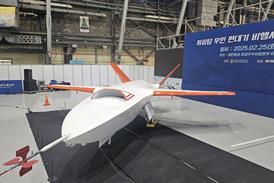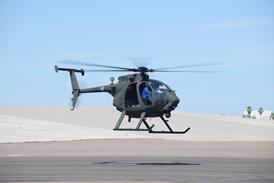On 1 January, 1998, the two main airports of Italy's second city will start a process of gradual role-reversal. Linate, which has always been Milan's main airport, is almost logjammed, while Milan Malpensa opens the first stage of a development which will give it more than twice Linate's capacity, both for passenger traffic and air-transport movements (ATMs).
Linate, with its one terminal and single runway, handles nearly 13 million passengers and 80,000t of freight/mail per year. Just 7km from the city to the south-east, Linate enjoys, and will continue to enjoy, the advantage of its proximity. Malpensa, on the other hand, is 48km out of town to the north-west and handles about 4 million passengers and nearly 100,000t of freight/ mail a year. Fast road connections and a city rail link make access easy, however, and the plan is to make Linate to Milan as Orly Airport is to Paris, where the relatively distant Paris Charles de Gaulle has become the French capital's major international airport.
Exchange policy
Today, Linate serves short- and medium-haul domestic and international routes, while Malpensa is the long-haul and charter base. There is now a policy which says that routes generating fewer than 2 million passengers a year should move to Malpensa, although the airport management admits that, since only the Milan-Rome route comes into this category, it is clear that the policy has some evolving to do.
The new airport development, dubbed "Malpensa 2000", will change dramatically the balance and the capacity of Milan's airport system. Both Malpensa and Linate airports are owned by the Societa Esercizi Aeroportuali (SEA), in which the Municipality and the Province of Milan between them hold 99% of the shares. A "medium- long-term economic effects" plan published by SEA shows Linate's workforce of 38,000 people decreasing to 23,000 in the "medium term", then stabilising at about that level for the "long term" (medium and long are not precisely defined). At Malpensa, today's 13,000 workforce is forecast to expand to 76,000 in the medium term and 120,000 in the long term.
The airport has two parallel runways, and these have been extended. Its main new development takes the form of a massive terminal area and ground manoeuvring/parking ramp on a new site to the airport's western side. The terminal building has four levels and a gate system allowing for complete separation of arriving, departing and transfer passengers, making security more effective and much easier to police. At its 1 January opening, the terminal will have two completed satellites with a total of 26 fly-bridges, as well as 13 remote stands on the apron, and an immediate capacity for up to 12 million passengers a year. The existing terminal, with its 6 million-passenger a year capacity, between the runways at the airport's northern end, will continue to operate, eventually working as a remote satellite for the new main area.
By 2000, the terminal will have been extended to its full planned size, and the third and final ten-gate satellite will be opened. On completion, the new site will have a capacity of 18 million passengers a year, and the airport's capacity will be 24 million.
Estimated dates for the arrival of the first commercial movements at the new terminal vary, but they should be within three months of the official January opening, the SEA says. Negotiations continue over how to divide the use of the existing and new terminals - whether by operator or by category.
Cargo operations
The first stage of the new "Cargo City" will also go operational in January. This is on the south-west side of the airport and offers an immediate capacity to process 250,000t cargo a year. Existing plans allow for expansion to 1 million tonnes a year, which would put it in the same league as Paris and Amsterdam.
Nearly 2% of the entire project-funding is being invested in schemes to limit the environmental impact of the growing airport. These include longer runways, which allow lower-power take-offs, noise-barriers, water- and waste-recycling, and a programme to plant a million trees in the airport's close vicinity. The impact is intended to be favourable to the economies of the Lombardy and Piedmont regions without damaging the environment.
Source: Flight International























